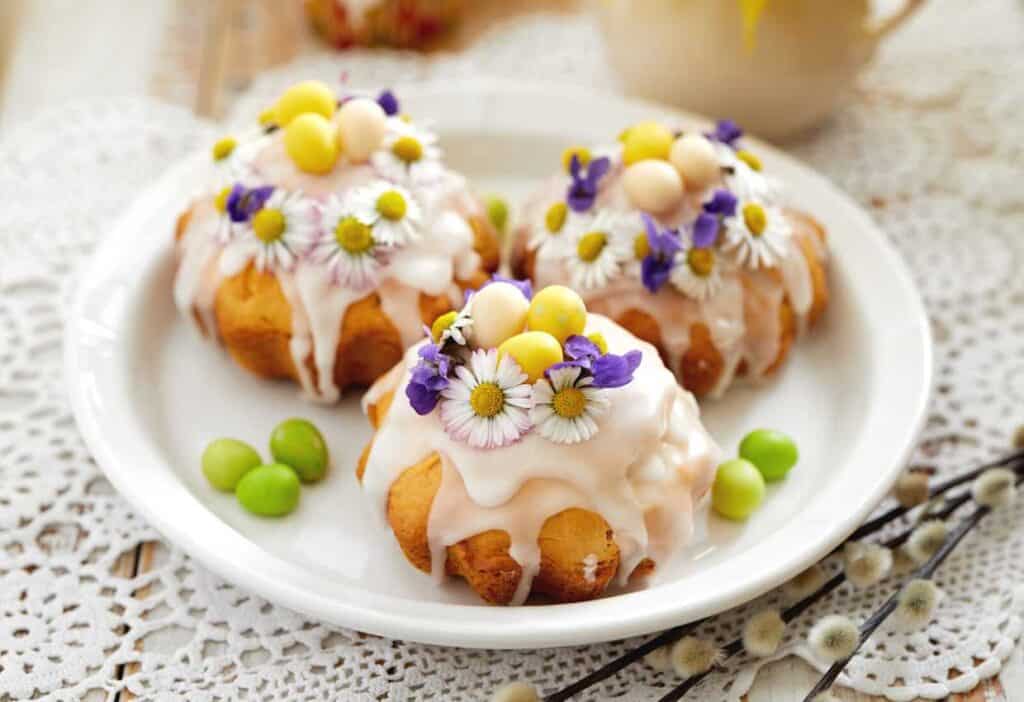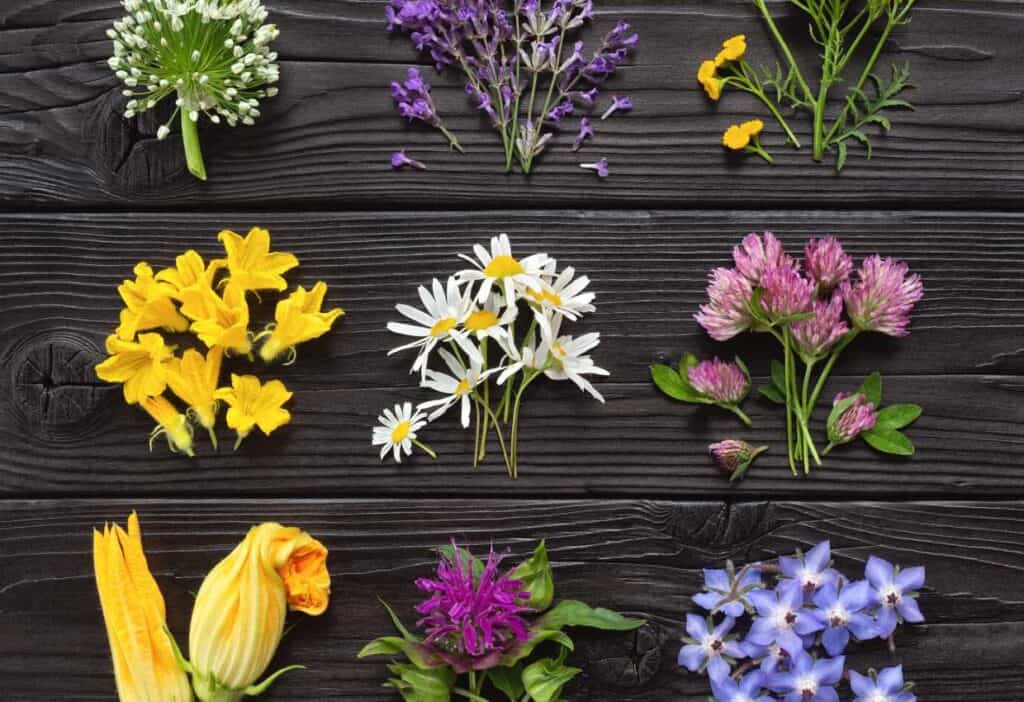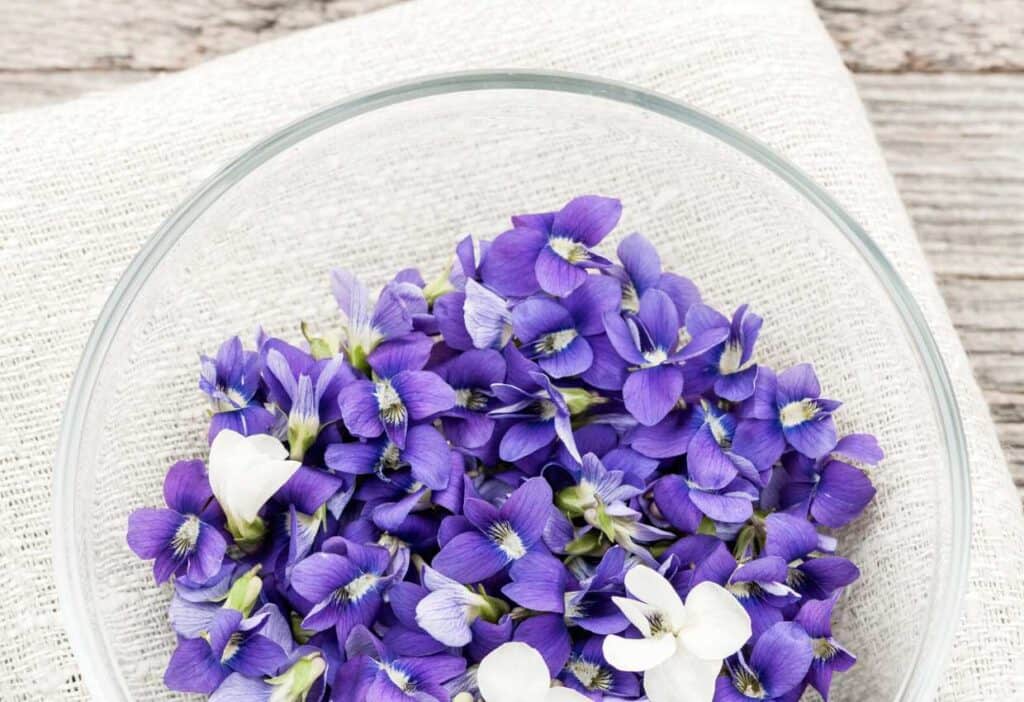Edible flowers add flavor, nutrition and visual appeal to dishes and drinks and growing them at home is a wonderful way to ensure they are free of pesticides and always readily available. Discover some of the most popular varieties, learn how to cultivate them and explore the many delicious ways to enjoy their beauty and taste.

Choosing edible flowers
Not all flowers are edible, so it’s essential to do your research before you start adding them to your meals. Some common edible flowers include:
- Calendula: Calendula petals make a delicious tea and add a slightly spicy flavor when used as a garnish or used in savory dishes like salad and soup. Calendula also makes for a popular oil infusion for culinary, bath and body purposes.
- Rose: Edible roses often add a delicate floral flavor to dishes such as jams, jellies, syrups and desserts. Whether fresh or candied, rose petals and buds can be used as beautiful decorations and garnishes for cakes and drinks.
- Lavender: Lavender buds are commonly used to make lavender syrup to use in desserts, cocktails and to make other drinks such as lavender lemonade.
- Violet: Violet flowers work well fresh in salads, made into syrup for drinks and candied as an edible garnish for desserts.
- Dandelion: Dandelion flowers are often thought of as a pesky weed but they are not only highly medicinal but packed with a unique flavor that is delicious when made into wine, fritters and added to salads.
- Nasturtium: Nasturtiums are commonly added to salads and sandwiches for a beautiful pop of color and peppery flavor.
- Pansy: Pansies are mildly sweet and often used as a garnish for cakes and fruit dishes.
- Borage: Borage flowers are little, delicate blue flowers with an almost cucumber-like flavor. They are commonly added to salads and cocktails.
- Elderflower: Elderflowers have a sweet, floral flavor, so they are often used to make syrup for drinks and desserts.
- Chive blossoms: Chive flowers have a mild onion flavor that is delicious in salads and vegetable dishes and it also makes for tasty infused vinegar.
- Hibiscus: Hibiscus flowers are known for their tart flavor and vibrant red color that makes an excellent addition to drinks, syrups and jellies.
- Squash blossoms: Squash blossoms are commonly stuffed with cheese and then fried for a delightful appetizer.
Filled with appetizers, salads, sides, mains and desserts, Food Drink Life's cookbook will become your favorite!
- Easy and delicious recipes from a variety of top chefs and recipe developers.
- Bright, colorful pictures on every page.
- Printer-friendly recipes that you can download instantly to your device.
- Printable shopping list and a kitchen conversion sheet.
“When I was in middle school, we went on a whole-grade outdoor education adventure. I’ll never forget the clovers we ate there and the education we got around them. We picked fresh clover in an area free of pesticides and other health concerns then dipped the flowered tips into a pancake batter and pan-fried them quickly. They were surprisingly tasty and so much fun. It’s one of my favorite springtime activities even today.” — Michelle Price, Honest and Truly

A quick word of caution
Flowers not grown for consumption but rather for ornamental beauty may have been treated with pesticides, herbicides or other chemicals that can harm human health. Additionally, flowers growing near busy roads or industrial areas may absorb pollutants from the air or soil, making them unsafe for consumption.
To ensure that the flowers you use are safe and free from harmful chemicals, it’s best to either grow them yourself using organic methods or purchase them from a reputable source that guarantees their safety for consumption. Always wash the flowers thoroughly before using them in any recipe.
Growing edible flowers
One of the great things about edible flowers is that they’re pretty easy to grow, even if you don’t have a green thumb. Here are a few tips for growing edible flowers:
- Choose the right location: Most edible flowers thrive in well-draining soil and full sunlight. Be sure to choose a spot in your garden or patio that gets at least six hours of sunlight daily. If planting in pots indoors, place them near a sunny windowsill.
- Start with quality soil: Good soil is the foundation for healthy plants. Invest in quality soil rich in nutrients to give your flowers the best chance of success. Avoid harmful pesticides and chemicals for the safest and highest quality edible flowers.
- Water regularly: Most edible flowers require regular watering, especially during hot, dry weather. Be sure to water your plants deeply and consistently to keep them healthy.

Enjoying edible flowers
Now that you’ve chosen and grown some edible flowers, it’s time to enjoy them. Here are a few ideas for incorporating edible flowers into your meals:
- Add them to salads: Edible flowers make a colorful addition to any salad. Add nasturtiums, pansies or violets to your next salad for a burst of flavor and color.
- Make flavored oils: Infuse a favorite cooking oil with the flavor and fragrance of edible flowers. Add a few blossoms to a jar of oil and let it sit for a few days at room temperature before straining and using.
- Use them as a garnish: Most edible flowers make a stunning garnish for drinks, desserts and even savory dishes like pizza. Add a few pansies or rose petals to your next cocktail or soup.
- Brew tea: Many edible flowers, such as hibiscus and lavender, can be brewed into a delicious and calming tea. Pour hot water over the blossoms and let them steep for a few minutes before straining.
- Candy them: Candying edible flowers is a great way to preserve them and add sweetness to your dishes. Coat them in sugar syrup and let them dry before using.
Kristen Wood is a photographer, writer and creator of the food blog MOON and spoon and yum. She is also the author of Vegetarian Family Cookbook, Fermented Hot Sauce Cookbook, and Hot Sauce Cookbook for Beginners. Her work has been featured in various online and print publications, including Elle, Martha Stewart, Yoga Journal and more.
